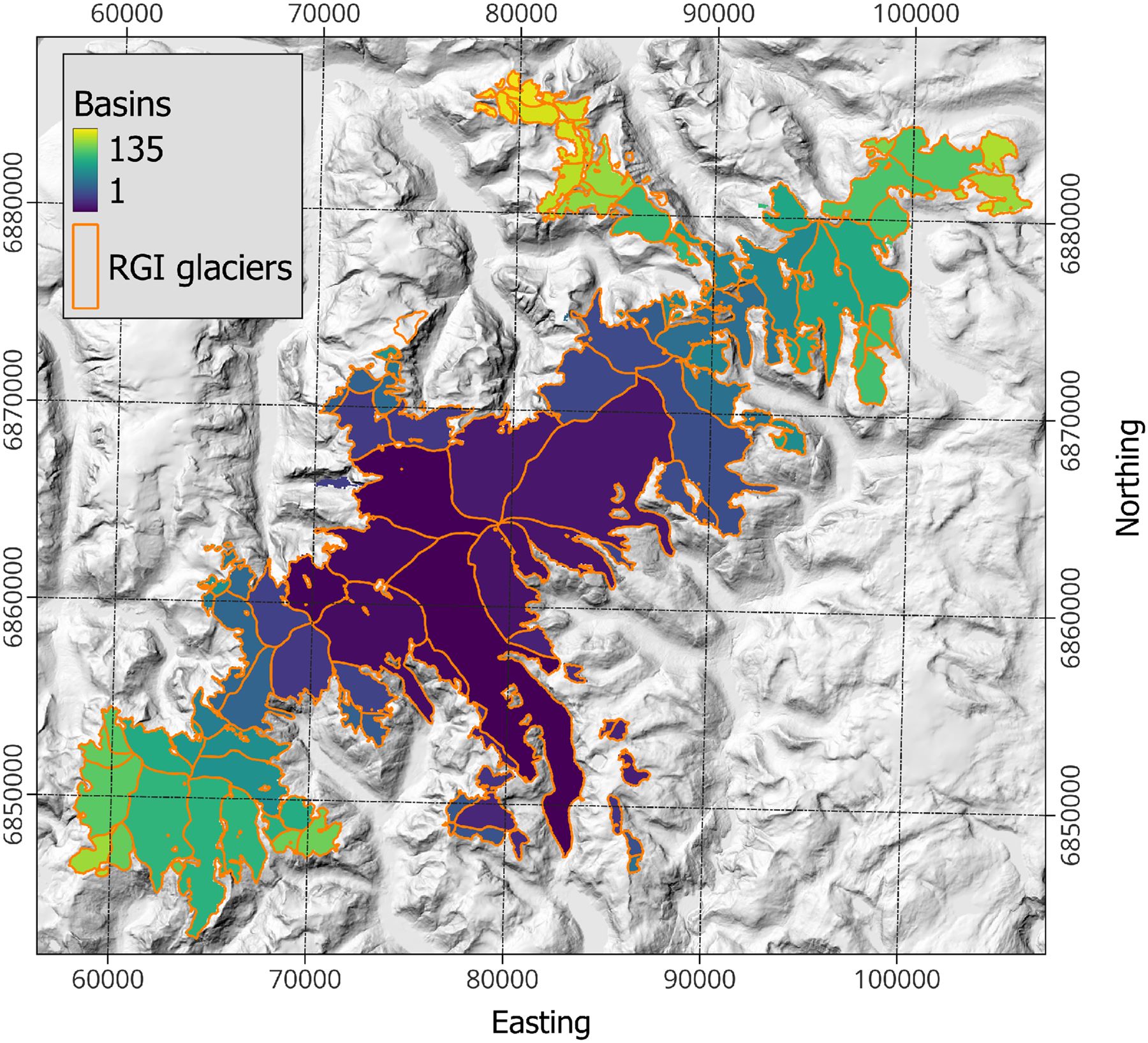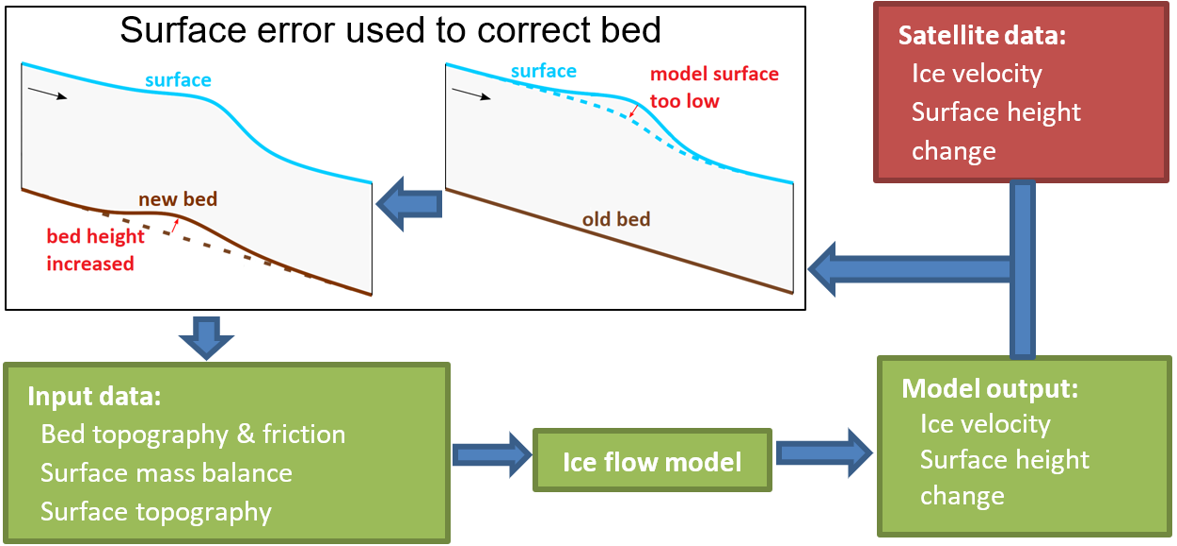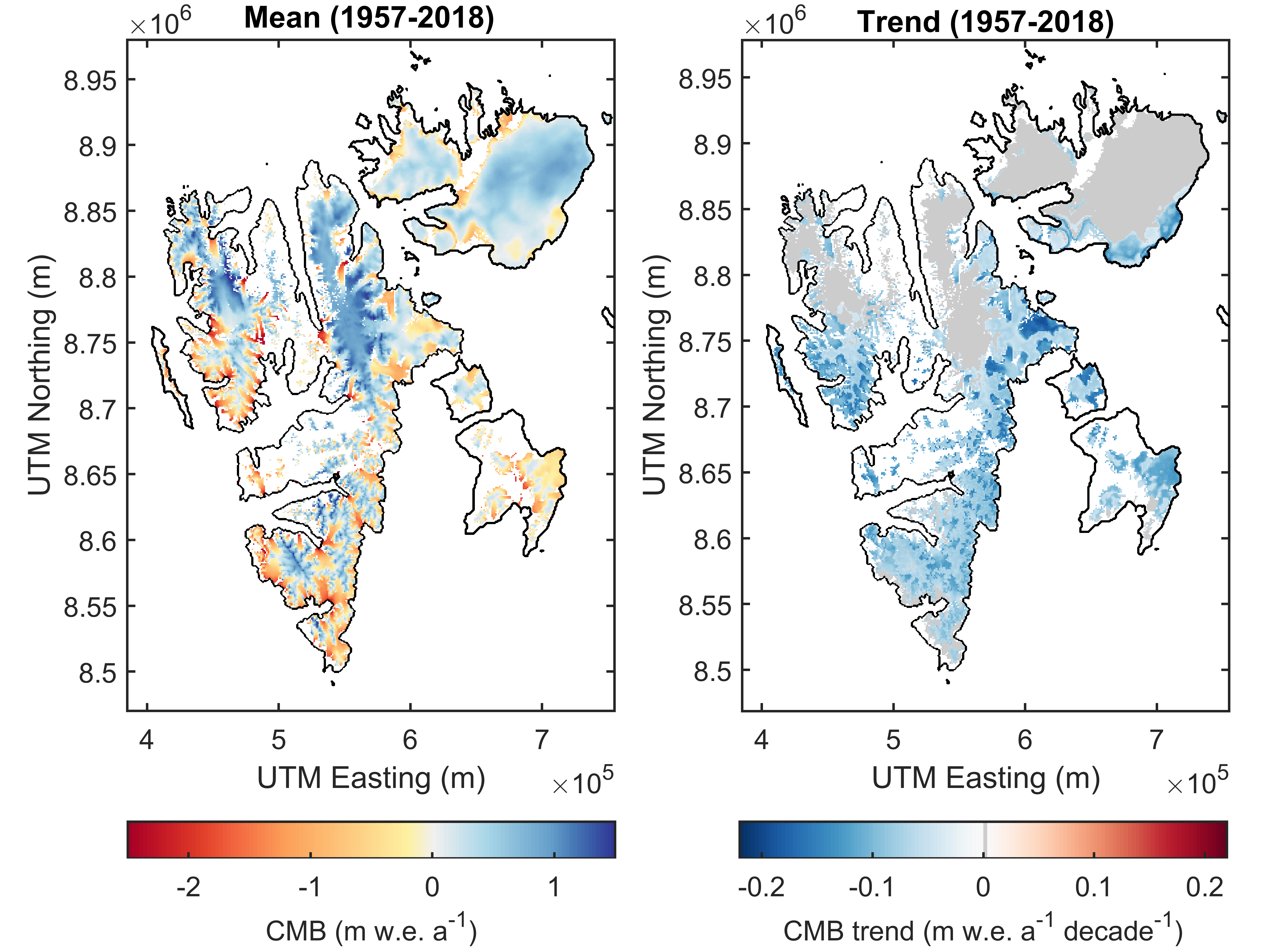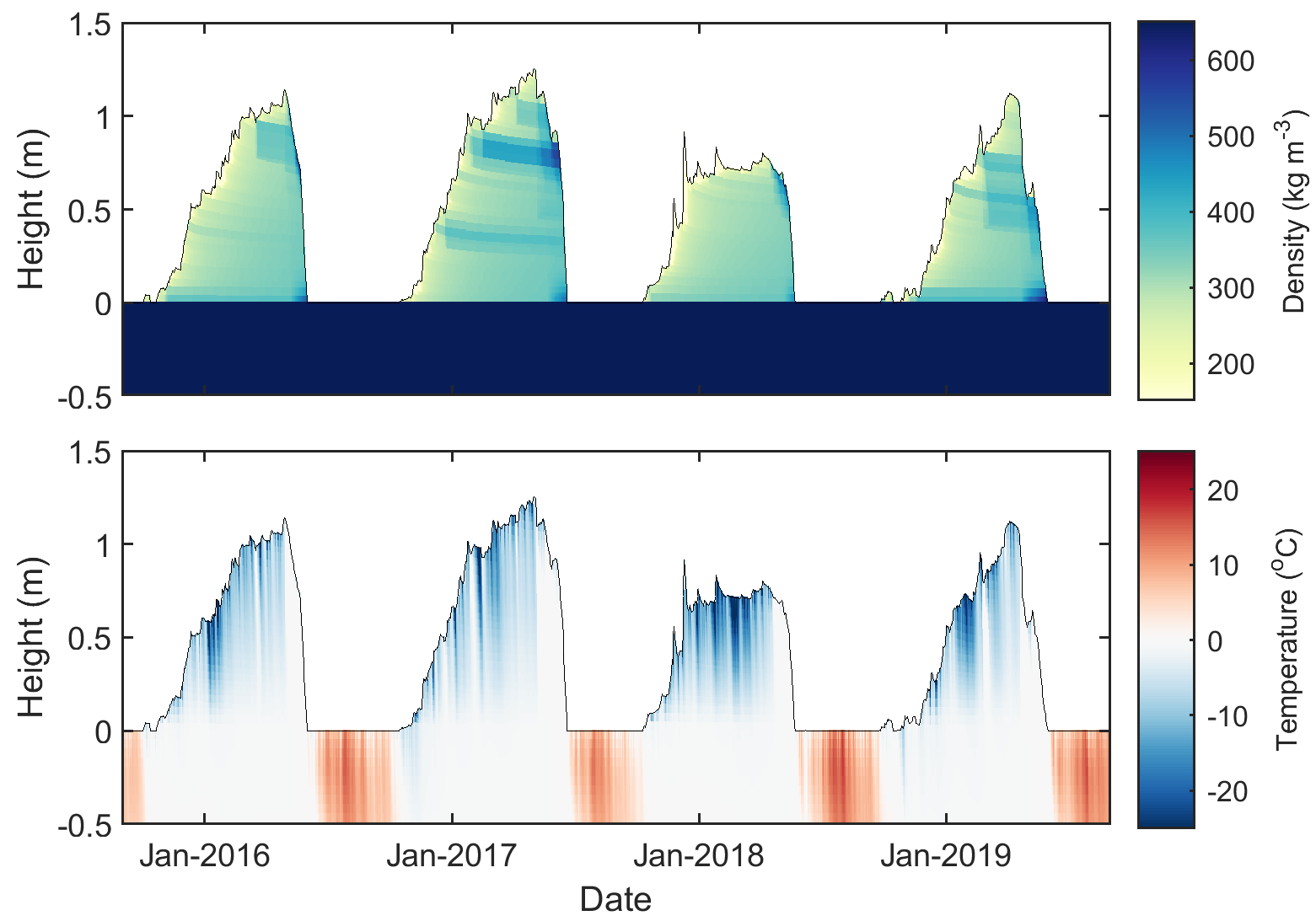Ward van Pelt
Associate professor
Recent work
We recently generated new glacier thickness and bed maps for Svalbard. See here for more details! 
Have a look at our recent study on ice thickness inversion in Scandinavia! 
Inverse thickness estimation & spinup tool
The inverse method, currently used in projects funded by the Swedish Research Council,
European Union and the Swedish National Space Agency, was originally invented by
Van Pelt et al. (2013).
The inverse method performs hundreds of short simulations (~0.01 year each) with an ice flow model around the present-day and continuously improves basal conditions to step-by-step reduce errors between modeled and observed surface conditions (elevation change & velocity).
Recent advances in the methodology allow for simultaneous estimation of bed topography and friction. The method has recently been applied to estimate thickness of a tide-water glacier in Svalbard (Frank et al. 2023),
to reconstruct thickness and volume for all glaciers in Norway and Sweden (Frank et al. 2024), and to create a bed map of all glaciers in Svalbard (Van Pelt and Frank, 2025), using different ice flow models for large fast-flowing tide-water glaciers (Parallel Ice Sheet Model; PISM) and small mountain glaciers (Instructed Glacier Model; IGM).
The inverse method previously ranked well in two phases of the Ice Thickness Model Intercomparison eXperiment (ITMIX; Farinotti et al. 2019, 2021).
In ongoing work, the inverse method is applied to all mountain glaciers on Earth, to the Greenland Ice Sheet, and will be implemented as a spinup and thickness estimation tool in a new cryosphere digital twin (TerraDT project).

Energy balance - firn model
The coupled energy balance – snow and firn model (EBFM; Van Pelt et al. 2012, 2019) is a physically-based routine that simulates glacier surface and snow conditions.
Driven by meteorological input the model generates distributed and time-dependent output of energy and mass exchange at the glacier surface, as well as multi-layer snow properties including density, temperature and water content.
Current and previous users of the model and its output include colleagues at Uppsala University, Stockholm University, Utrecht University, the Norwegian Polar Institute, Fribourg University, Oslo University, University of Washington, the University of Edinburgh, Oxford University, Norwegian Mapping Authority, Norwegian Water Resources and Energy Directorate, and University of Aberdeen. Applications of the model include modeling glacier surface and snow conditions in Svalbard, Greenland, the Canadian Arctic, the Alps, northern Sweden and High-Mountain Asia.
A previous MATLAB version of the source code of EBFM can be accessed here. A Python version of the model is currently being developed.

Seasonal snow model
A recently modified version of EBFM, the energy balance - snow model (EBSM), simulates seasonal snow pack evolution in non-glacier terrain.
The snow model includes a soil routine to account for heat transfer in and between snow and soil.
Other additions include a new scheme for the description of fresh snow density and compaction, and turbulent heat exchange.
The model has recently been applied in northern Sweden and Greenland to study impacts of rain-on-snow events on snow stratigraphy.
